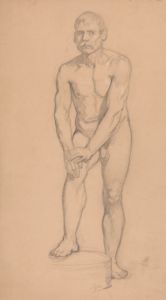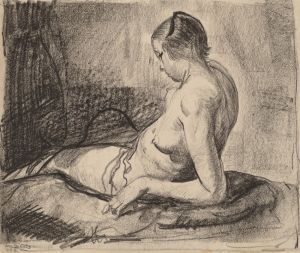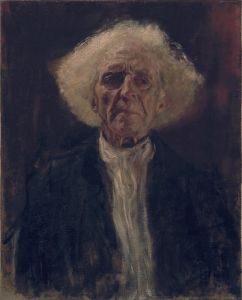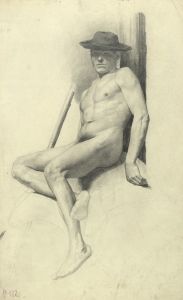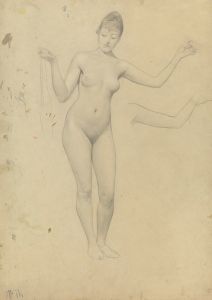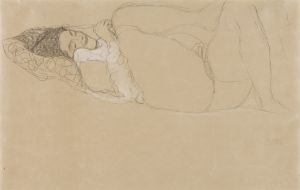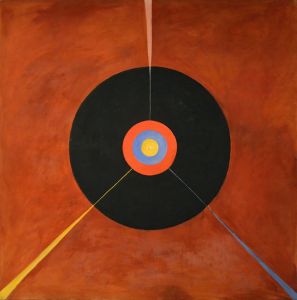
Reclining Nude
A hand-painted replica of Gustav Klimt’s masterpiece Reclining Nude, meticulously crafted by professional artists to capture the true essence of the original. Each piece is created with museum-quality canvas and rare mineral pigments, carefully painted by experienced artists with delicate brushstrokes and rich, layered colors to perfectly recreate the texture of the original artwork. Unlike machine-printed reproductions, this hand-painted version brings the painting to life, infused with the artist’s emotions and skill in every stroke. Whether for personal collection or home decoration, it instantly elevates the artistic atmosphere of any space.
Gustav Klimt, an Austrian symbolist painter, is renowned for his distinctive style that combines sensuality and symbolism. One of his notable works is "Reclining Nude," which exemplifies his fascination with the female form and his mastery in capturing the essence of eroticism and beauty through art. Klimt's work often features themes of love, sexuality, and the female body, and "Reclining Nude" is no exception.
"Reclining Nude" is a part of Klimt's extensive exploration of the nude figure, a subject he frequently revisited throughout his career. This particular piece showcases a woman in a relaxed, reclining position, emphasizing the natural curves and contours of her body. Klimt's approach to the nude was both intimate and provocative, often blurring the lines between fine art and eroticism. His portrayal of the female form was groundbreaking at the time, challenging societal norms and pushing the boundaries of what was considered acceptable in art.
Klimt's technique in "Reclining Nude" is characterized by his use of soft, flowing lines and a delicate color palette. The painting reflects his ability to convey texture and depth, creating a sense of realism while maintaining an ethereal quality. The use of gold leaf, a signature element in many of Klimt's works, adds a luxurious and opulent touch, enhancing the sensuality of the piece. This technique, combined with his attention to detail, results in a composition that is both visually stunning and emotionally evocative.
The context in which Klimt created "Reclining Nude" is essential to understanding its significance. During the late 19th and early 20th centuries, Vienna was a hub of artistic innovation and cultural change. Klimt was a leading figure in the Vienna Secession, a movement that sought to break away from traditional academic art and embrace new, modernist approaches. His work, including "Reclining Nude," reflects the ideals of the Secession, emphasizing individuality, expression, and the exploration of new artistic forms.
Klimt's portrayal of women in his art has been the subject of much discussion and analysis. While some critics view his work as objectifying, others argue that he celebrated female beauty and strength, presenting women as powerful and autonomous figures. "Reclining Nude" can be seen as a testament to Klimt's complex relationship with his subjects, capturing both their vulnerability and their allure.
The legacy of "Reclining Nude" and Klimt's other works continues to influence artists and captivate audiences today. His innovative approach to the nude form and his ability to convey emotion through art have solidified his place as one of the most important figures in the history of modern art. "Reclining Nude" remains a significant example of Klimt's artistic vision, embodying the sensuality, beauty, and complexity that define his oeuvre.
In summary, "Reclining Nude" by Gustav Klimt is a masterpiece that exemplifies the artist's skill in depicting the female form with elegance and sensuality. Through his unique style and innovative techniques, Klimt created a work that challenges traditional perceptions of beauty and continues to resonate with viewers more than a century after its creation.





